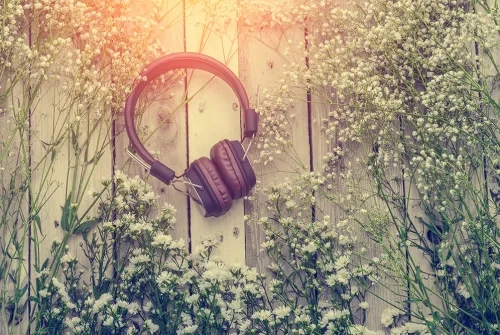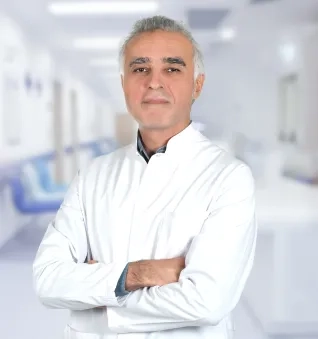Alo Yeditepe
Alo Yeditepe
Music Therapy
By revealing our thoughts and feelings, music can offer a unique opportunity for self-awareness and enrichment of expression. Throughout history, music has played a role in expressing social consciousness, as well as being an artistic source of inspiration for people. We know that in every aspect of life, there is no process without music from birth to death.
The presence of tones surrounding people of all ages and cultures, filling their ears, also explains the fact that we still do not use music to an effective extent in treatment. Music therapy is a treatment model based on very old dates, originally tried and tested, but at the same time, its potential is not yet sufficiently understood and reflected in daily practice.
The theoretical role of music in communication begins with human history. Music is the most effective method used in the expression and communication of feelings and thoughts between people and societies throughout history. Since its inception, the world has played a major role in the development of the religious, military, and spiritual forces of societies. In communication, music began long before the speech. Music is a very strong basic phenomenon that affects people's mental, physical, and spiritual behaviors, meets communication needs, and balances social relations. When music is used as a method of therapy, it protects and improves the mental and physical health of people of all ages.
Music not only makes people mentally strong, but it is also one of the most effective therapy methods used in the treatment of mind and body health.
History
Music is a Greek word and has the same meaning all over the world. The word music is also used in Turkish. According to mythology, the nine fairy daughters who were considered the daughters of Zeus were called ‘Mousa’ (Muse). The ancient Greeks believed that these fairy girls were responsible for organizing the beauty and harmony of the whole world. Therefore, it is accepted that the word 'music', which is used in almost every language today, comes from the root of ’muse'.
Music therapy is one of the oldest forms of treatment and has been used to treat patients in various cultures for over four thousand years. The ancient Greeks considered music to be the root of all virtue. Apollo, known for his beautiful lyre playing in ancient Greek mythology, was considered the god of both music and medicine and relieved people's troubles by playing the lyre. In the ancient Greeks, music was the basis of all virtues and was accepted as a major factor in the education and purification of the soul. The philosopher and mathematician Pythagoras explored the possibility of treating despairing people or quickly angered patients with certain melodies. Music, which is a result of the harmony of sounds, is the most effective remedy in cases where the harmony in the body is disturbed, according to Pythagoras. In the early days of known history, people thought that when they couldn't tell something, it was magical and mysterious. They also described sounds as the sound of spirits in nature and believed that they reached spirits by drumming or making other sounds. Every living thing, and therefore every soul, has a voice, a frequency. They would try to reach the voice of the spirits through song rhythm and magic with their thoughts. Shamans used to cast spells so that the evil spirits, which they thought were a kind of disease agent, would leave the bodies of the sick. Shamans attracted people with the influence of rhythm, music, and dance hypnotized them, and thus guided communities. The songs sung in the treatment of diseases, the music played, the rhythm, and the incense burned were all meant to ward off evil spirits.
In the 18th and 19th centuries, ideas about the use of music in treatment began to be put forward in Europe, and in the 20th century, the necessary foundations were laid for this treatment to reach its deserved place. It has been mentioned that uncontrolled muscles are activated with music, and musical activities can be performed individually and in groups. During this period, music therapy sessions began to be organized for both children and adults in schools and hospitals. Very successful results were obtained, especially in pediatric patients. In addition, a team of nurses was given to the operated patients to sing and play an instrument every day.
Ibn Sina, one of the great names of Turkish Islamic history, also studied the effect of music on the human body. He discovered that the treatment should be effective and the environment should be made cute to increase the mental and spiritual balance of the patient, and he argued that listening to music would be one of the most effective ways for this.
Ibn Sina, who frequently applied to Farabi as a source in research, found that music notes represent ups and downs in human moods. According to him, what makes music pleasing to us is not our hearing power; it is our ability to perceive that makes various suggestions from that composition. It is the feelings that music awakens. Hippocrates, considered the father of medicine, took some patients to the temple with hymns for their treatment. According to Hippocrates, it is important to try music for diseases where other means of medicine are useless. Socrates' student Plato (Eflatun) stated that in 400 BC, music influenced the depths of the soul with harmony and rhythm, giving the person tolerance and comfort.
In ancient Greece, data are showing that music was used in the treatment of epilepsy, depression, homesickness (melancholy), mania, insanity, somnambulism, lethargy, catatonia, hysteria, stroke, aphasia, tarantula-ma, korea, gout, febrile diseases, rheumatism, various pains, plague, measles, and rabies. It is claimed that music is good for bleeding in the Odyssey written by Homer, who lived in the 9th century BC. The anatomist and physicist Gallen says that music is an antidote against scorpions and insect bites. Athennoaops treated pain by playing an instrument over the sick area. Aristidis, Theophras, Plato, Asclepiades, Socrates, Cicero, and Celsus treated mental illnesses with music.
Aurelian suggested playing the Phrygian oboe in the treatment of chronic diseases. At the same time, Phrygian music, according to Pythagoras, is also useful in the study of sexual problems. According to various sources, the Phrygians, who established a high civilization in Western Anatolia, constitute an important milestone in the beginning of the treatment with music.
Homere used music in surgery and was successful. Plato is famous for using a trumpet to treat deafness. There is an old Greek proverb that says, “To relieve human suffering is linked to the possibility of using a song.” When Heroes Asklepios rose to the status of medicine, he built a similar Asclepion in Epidaurus in Greece in the 4th century BC to Bergama. These are the world's first known hospitals. On their doorstep, it reads, “Death cannot enter here.” As we have learned from the inscriptions, suggestions, physiotherapy, and music therapy methods, which are still used today, have been applied in Asclepions. It is known that the Hebrews, a Semitic tribe, benefited from Sumerian and Hittite music according to some sources. Kleman, a historian from Alexandria, Moses learned music from the Egyptians. His Holiness David (1055-974 BC) healed King Saul's insanity by playing the harp. According to ancient Egypt, music is the most secret of the arts.
Music has been used in mystical ceremonies in every century because it helps awaken people's intuition. In Cairo's major hospitals, music was played before operations because it was believed to empower patients. In ancient China, it was believed that a gong called "lo", which made a loud sound, kidnapped evil spirits and demons from the patient.
In ancient times, developments in philosophy and science in Egypt, Anatolia, Greece, and Rome gave way to scholastic thought with the influence of Christianity in medieval Europe, and a dark period began for Europe. In this period, Europe could only reach its ancient knowledge with the influence of Turkish-Islamic scientists. Important examples of music therapy are limited. In a book published by Serras in 1742, tarantulas, which developed in the 15th century due to the bite of the tarantula spider, were treated with music in Italy. According to written sources, these patients were in great fear and horror until they died if they could not catch up with the music aid. When they heard music, they danced and sweated until they were exhausted and fell into a deep sleep and recovered. For this purpose, special healing compositions were also made. These compositions have also been used in other insect intoxications. These types of treatment sessions are considered as a 'catharsis‘, that is, cleansing, which lasts 2-3 days day and night and ends with exhaustion. There have been clerics in history who have accepted music as a gift from God, as well as clerics who have accepted it as evil and burned people in inquisition courts. Over time, music began to be used as a spiritual healing tool. As a matter of fact, Luther, the founder of Protestantism, was a good musician and accepted music as a gift from God.
There is a history of music that has been going on for at least 6000 years in Turks. The drum is the most common music, announcement, and sign tool in Turks. In addition, various blowing, percussion, and string instruments have existed throughout history. The music of the Oghuzs, who settled in Anatolia between 3000-2000 BC, is a source of shamanic music.
It is known that shamans, drummers, and copuzists called baksi in Kyrgyz Turks to use copuz in magic and treatment and these people are considered sacred and accompany their spirituality as experts of the human soul in public. In the Kyrgyz Turks, baksi is a kind of shaman and tries to heal his patient with music, poetry and dance. Today, still, baksi and shamans are present in Central Asian steppes. Still used in Asian Turkish provinces, stringed tools such as koray, zbızgı, hill, dutar, and ground-fed tools such as spurs and tares have pentatonic properties. Pentatonic melodies are still used in the adaptation of autistic children at the Royal School of Music Therapy in London. When the music to be applied in treatment centers is desired to be away from tension, five sound systems are used. It is also known that Seljuk, Mamluk, and Ottoman Turks treated mental patients with medicine, occupation, and music in their hospitals in Damascus, Cairo, and Bursa.
Music Therapy Today
An increasing number of individuals are experiencing mental problems. As social life becomes more complex, mental problems also become different. Treatment protocols are also gaining new dimensions in this environment. Music therapy is used today to improve the psychological state of patients in the treatment process of many diseases. Although it is a cheap and side-effectless method, it has a positive effect on the physical, psychological, social, emotional, and spiritual recovery of patients. Music is a unique stimulus as it causes both physiological and psychological responses in the listening individual.
Music therapy, which has been forgotten with the development of Orthodox medicine and has been used for thousands of years, has started to be noticed again by Western medicine. Now, the neuroscience of music and musicotherapy is studied. Music therapy is an auxiliary health specialty based on the patient's relationship with a trained music therapist who uses music and all of its physical, emotional, mental, social, aesthetic, and spiritual faces to improve or improve one's health.
The music therapist helps basically treat the patient's health by reaching the treatment methods and goals through using their musical experiences (improvisation, singing, lyricizing, listening and discussing music, moving with music) in various fields such as cognitive functions, motor skills, emotional and effective development, behavior and social abilities, and quality of life.
Music therapy approaches physiological functions more holistically. In other words, with six elements consisting of rhythm, melody, timbre, dynamics, harmony, and form, it turns to the body and soul to regulate the system and to enable it to receive and process more accurate information. With much qualitative and quantitative research in the literature, it is considered both an art and a science. The practice can be done one-on-one with the person or group, in the form of an active participant or passive listener, through improvisation, or certain music.
Hoping that music will be used more widely in the future to the extent that it is deserved in treatment.
About
Faculty and Year of Graduation:
Marmara University Medical Faculty, 1996
”
See Also
- What is Autism Spectrum Disorder?
- What Does Narcissist Mean? Narcissistic Personality Disorder
- What is Peer Bullying?
- Puberty
- What Causes Sleep Problems in Babies?
- Experts Warn Students Before the Exam!
- Tips for Choosing a Babysitter
- Has Your Child Adapted to School?
- Let the Bonding Between Mother And Child Not Be Sacrificed for Success!
- The Biggest Question for Working Mothers: Who Will Take Care of My Child?
- Time to Learn Responsibilities
- Toy Guide for Your Baby
- Do Not Be Overly Anxious and Panicky with Children
- What is Specific Learning Disability?
- What is a Mental Disability?
- What is Attention Deficit and Hyperactivity Disorder?
- Developmental Disorders in Children
- What is Autism?
- What is Language and Speech Disorders?
Alo Yeditepe




